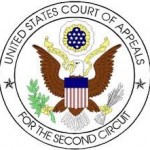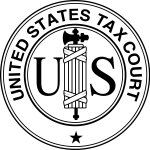The IRS continues to scrutinize qualified appraisals in the context of façade easements, particularly in the historic districts of New York City. In a Memorandum Opinion issued July 14, 2010, Judge Cohen found that the taxpayers, Huda T. Schneidelman and Ethan W. Perry, failed to obtain a qualified appraisal for their donation of a historic façade easement. In 1997, taxpayers purchased a townhome for $255,000 in the Fort Greene Historic District of Brooklyn. In 2002, taxpayers received a postcard from the National Architectural Trust (NAT) announcing an upcoming meeting in the New York City area to provide information regarding the donation of a façade conservation easement and possible related tax benefits.
The taxpayer contacted her accountant, who had 40 years of experience, and asked him about the façade easement. He had not heard of façade easements before, but attended the NAT meeting and determined that the façade easement contribution deduction was appropriate under the Internal Revenue Code.
In March of 2003, taxpayers completed a façade conservation easement application and made a fully refundable $1,000 deposit to NAT. NAT accepted and processed taxpayer’s application and provided her information about the appraisal process. The taxpayer waited to pursue the donation until 2004, so that she could save enough money to pay for the appraisal. In April of 2004, taxpayer hired an appraiser from the NAT provided list of appraisers “qualified to do easement appraisals.”
The appraiser taxpayer used was a “qualified expert in the field of real estate appraisal and valuation.” In his report, the appraiser used the sales comparison approach to determine that the estimated market value of the property was $1,015,000 as of the appraisal date. Looking at historical comparisons of attached row homes in New York City, the appraiser determined that the façade easement value was about 11% to 11.5% of the total value of the property. Using these estimates the appraiser found that the value of the façade conservation easement would be estimated at $115,000 or 11.33% of the fee simple value of the property.
NAT accepted the appraisal and the City of New York recorded the conservation deed of easement for the property. Taxpayer attached Form 8283 to her 2004 tax return reporting a $115,000 gift to charity. She applied part of the deduction to her 2004 return and carried over $63,083 of the reported contribution to her 2005 and 2006 tax returns.
The IRS conducted an examination of Ms. Scheidelman and disallowed the deductions for her conservation easement in all three years. The IRS issued a notice of deficiency and Ms. Scheidelman filed a petition with the United States Tax Court. The Tax Court held that Ms. Scheidelman did not meet the threshold statutory requirement to deduct her donation because she did not have a “qualified appraisal.”
The Tax Court noted that the Form 8283 attached to taxpayer’s 2004 tax return did not include the date and manner of acquisition of the property or the cost or other basis of the property contributed. While these issues were not controlling, the Court noted, “there has not been strict compliance with the regulation requirements.” Particularly, the Tax Court took issue with the basis for the appraised value. Citing Friedman v. Commissioner, T.C. Memo. 2010-45, the Court emphasized the need for “reasoned analysis” and information about the valuation method to complete a “qualified appraisal.”
The Tax Court rejected the appraiser’s idea that façade easements were generally valued between 10% and 15% of the total property value. The Court relied on Nicoladis v. Commissioner, T.C. Memo. 1988-163, to emphasize the point that valuation is a question of facts and circumstances. For that reason the Court rejected the appraiser’s report because it “failed to outline and analyze qualitative factors for the Vanderbilt property.” The application of a percentage of value lost because of the easement without a detailed explanation was not enough to constitute a valid method of valuation under Treas. Reg. § 1.170A-13(c)(3)(ii). The Tax Court did not address the valuation of the easement.
The Tax Court considered two other issues including whether the taxpayer’s payment to NAT was deductible as a charitable contribution and whether the taxpayer was liable for an accuracy related penalty under IRC § 6662. The Court found that the payments to NAT were not deductible because taxpayer failed to provide evidence necessary to show that they did not receive anything of substantial value in return for the cash payment. The taxpayer did not have to pay the § 6662 penalty because she reasonably relied on a competent tax professional and acted in good faith as to any underpayment for 2004.
Read the opinion here:
Scheidelman v. Commissioner, T.C. Memo. 2010-151
 In a division opinion that reflects the increasingly technical aspects of defending conservation easement cases, the Tax Court has disallowed deductions for the contribution of cash and a façade easement to a qualified organization. The charitable contributions were disallowed because the donee issued a “side letter” promising to refund cash contributions and rescind the easement over the donor’s property if the donation was “disallowed” by the Internal Revenue Service.
In a division opinion that reflects the increasingly technical aspects of defending conservation easement cases, the Tax Court has disallowed deductions for the contribution of cash and a façade easement to a qualified organization. The charitable contributions were disallowed because the donee issued a “side letter” promising to refund cash contributions and rescind the easement over the donor’s property if the donation was “disallowed” by the Internal Revenue Service.





